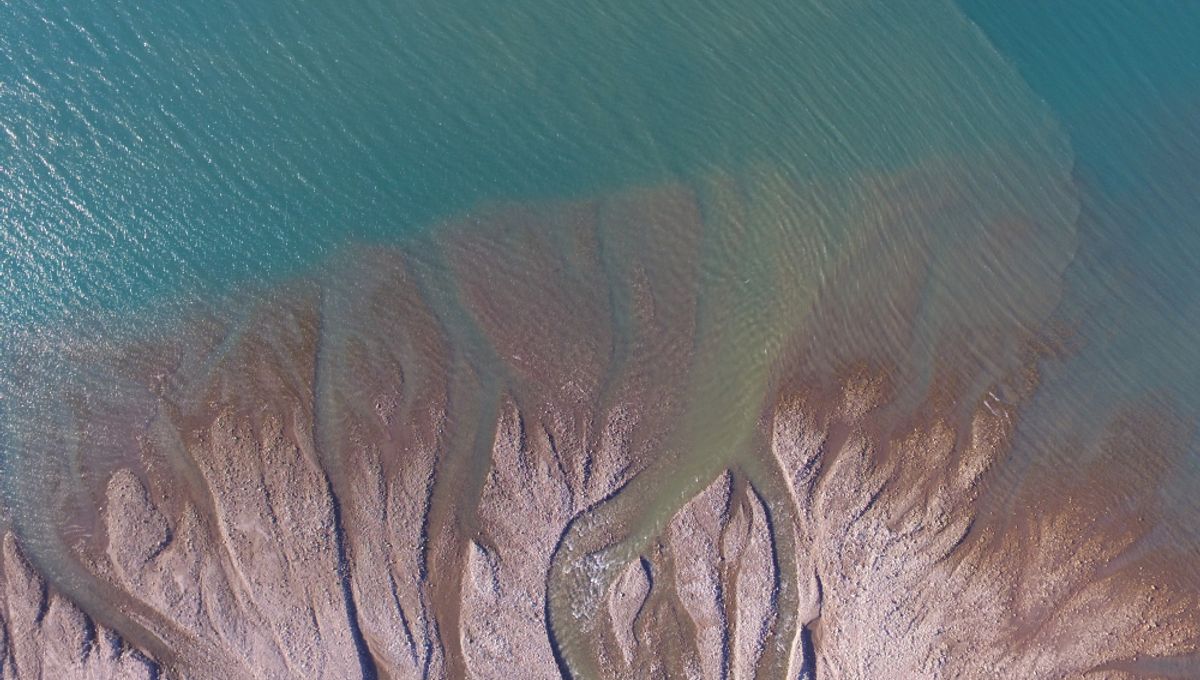
Researchers examining a collection of old and new fossils have recently discovered that an ancient species of bacteria, called Langiella scourfieldii, was among the first to colonize land, over 407 million years ago.
L. scourfieldii are a species of cyanobacteria, which is part of the Hapalosiphonaceae family. These microorganisms grew among early land plants during the Early Devonian age.
Although cyanobacteria have long been documented by scientists, less is known about how these tiny photosynthesizing organisms managed to leave the water to live on land. However, new research conducted by Dr. Christine Strullu-Derrien, a paleobiologist at the National History Museum in the UK, and her team, has found that L. scourfieldii are the oldest species of cyanobacteria known to have lived on land – a discovery that has helped fill in the gaps.
“With the 3D reconstructions, we were able to see evidence of branching, which is a characteristic of Hapalosiphonacean cyanobacteria,” Strullu-Derrien explained in a statement.
“This is exciting because it means that these are the earliest cyanobacteria of this type found on land.”
Cyanobacteria fossils are among the oldest ever discovered, with the oldest believed to be around 2 billion years old.
Otherwise known as blue-green algae today (a real case of a misnomer as they’re not algae), these bacteria live in and around water environments across the world, including oceans and rivers, but also on damp rocks (even in Antarctica), and in moist sand.
Cyanobacteria have played a fundamental role in shaping our planet’s history, helping to make it hospitable for complex life and influencing evolution more generally. Through their photosynthesis, they helped create the oxygen we need to live. In doing so, they likely started the Great Oxygenation Event, sometime between 2.4 to 2.1 billion years ago.
At this time, methane, which was the predominant gas on the planet, was replaced by oxygen and became the main component of the atmosphere. This event led to what is thought to have been the first mass extinction, as anaerobic organisms failed to adapt to the conditions.
“Cyanobacteria in the Early Devonian played the same role that they do today,” Dr Strullu-Derrien added. “Some organisms use them for food, but they are also important for photosynthesis. We have learnt that they were already present when plants first began colonizing land and may have even competed with them for space.”
What difference do Langiella scourfieldii make?
L. scourfieldii were first discovered in 1959 in rock fragments found in the Rhynie Chert fossil site in Aberdeenshire, Scotland. However, these specimens were difficult to examine properly, but more recent samples were recovered in the same area and are more amenable to analysis.
The key feature that Dr. Strullu-Derrien and her colleagues were looking for was signs of “true branching”. This happens when bacteria grow next to one another in a line, with some breaking off in a different direction to form branches – but not all cyanobacteria display this true branching.
As such, finding L. scourfieldii in the Rhynie Chert samples is a big deal, as it allows scientists to confirm they were present in damp land ecosystems in this area. In essence, they were able to make the leap from water to land and were able to thrive.
During the Early Devonian, the landscape of this part of Scotland would have been much different today. The land would have actually been located closer to the equator and experienced a far warmer, tropical climate. This would have made the Rhynie Chert an area covered by moist sandy flatlands with pools of brackish water.
However, this was a time before trees and other complex lifeforms existed, so it would have been a far less lush environment. In such a sparse kingdom, fungi, bacteria, and algae reigned supreme and competed for life on rocks near the water’s edge.
As plants had not yet evolved complex deep roots, they would have grown on the microbial mats formed by these microorganisms, forming an important interaction at this early stage of life on Earth.
“The Rhynie Chert is an iconic site because it’s 400 million years old, and much of the environment from this time has been preserved,” Dr Strullu-Derrien explained.
“It is the only site where you find traces of all the organisms together: the plants, animals, fungi, bacteria and algae. You can see the interactions between species that would have taken place.”
The study is published in iScience.
Source Link: 407-Million-Year-Old Bacteria Were Among The First Organisms to Colonize Land